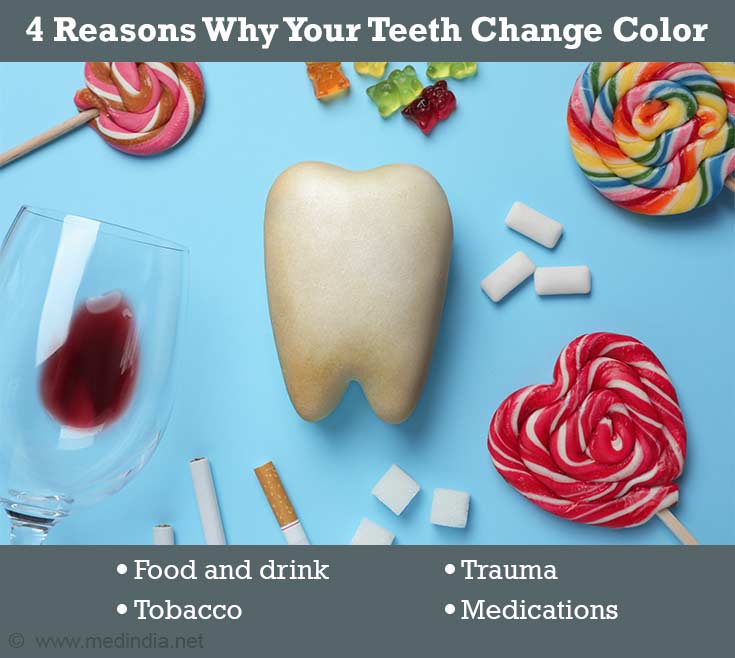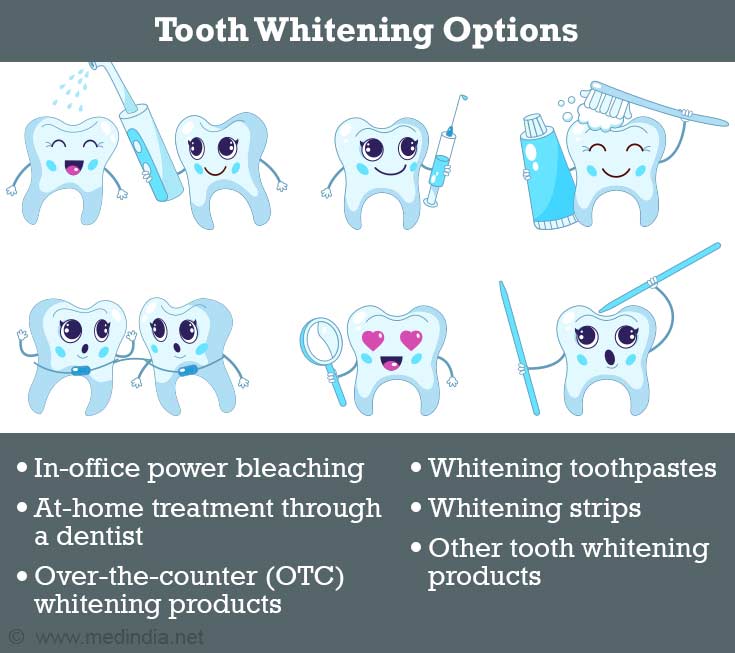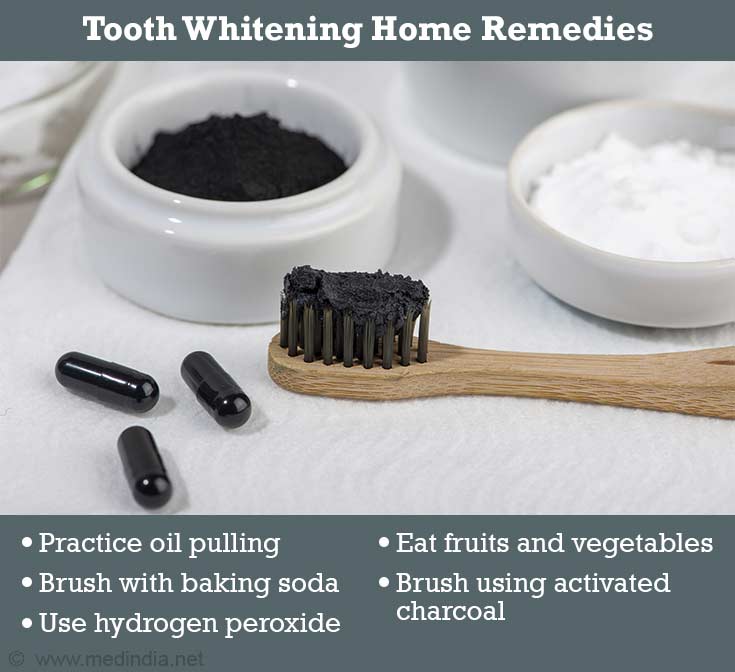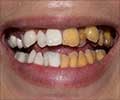- Teeth whitening - (https://www.nhs.uk/live-well/healthy-body/teeth-whitening/)
- Whitening: 5 Things to Know About Getting a Brighter Smile - (https://www.mouthhealthy.org/en/az-topics/w/whitening)
- About Teeth whitening - http://www.cda-adc.ca/en/oral_health/procedures/teeth_whitening/) - (https://www.mouthhealthy.org/en/az-topics/w/whitening)
- About Whitening - (https://www.ada.org/resources/research/science-and-research-institute/oral-health-topics/whitening)
Regularly brushing and flossing can keep the teeth healthy, but a whitening procedure is required to get a sparkling smile with whiter teeth. Tooth whitening not only bleaches the tooth surface to make it appear whiter but also removes tough tooth stains, which are not removed by brushing.
In today’s world, where appearance and aesthetics have become a fad, the desire to have sparkling white teeth has become an obsession. Tooth whitening has become one of the most frequently asked cosmetic dental procedures.
When it comes to tooth-whitening, there are two options:go for a professional tooth bleaching treatment in the dental office or try at-home tooth whitening products. There are some side effects from teeth whitening, but conventional whitening treatments are safe when used according to the product’s directions.
Reasons for Change in Tooth Color
Teeth color can go from white to not-so-bright for many reasons:

Food and Drink
Coffee, tea, and red wine are the main staining culprits. These food particles stain the outside of teeth due to color pigments called chromogens.
Tobacco
Two chemicals found in tobacco, such as tar and nicotine, create stubborn stains. These chemicals get mixed with oxygen and turn into a yellowish, surface-staining substance.
Age
As age advances, the outer layer of the tooth gets thinner with brushing and gives a yellowish appearance.
Trauma
The tooth may change color because it reacts to an injury by laying down more inner tooth material, which gives a dark brown appearance.
Medications
Tooth discoloration can also be a side effect of certain antihistamines, antipsychotics, and high blood pressure medications.
Young children who are exposed to antibiotics like tetracycline and doxycycline when their teeth are forming may have discolored adult teeth later in life. Cancer treatments can also darken teeth.
How to whiten the teeth will be based on the type of staining present. External stains can be treated with whitening toothpaste, whereas discoloration caused due to medication use, childhood illness, infection, tooth trauma, or aging needs to be professionally bleached.
Tooth Whitening Options
There are many methods and products available to whiten teeth.
Generally, three methods of whitening are used, which are either administered by the dentist or dispensed by the dentist to use at home or obtained over the counter.
Generally, the methods the dentists use will bleach the teeth with carbamide peroxide. This breaks down to hydrogen peroxide and urea and targets the tooth’s color in a chemical reaction.

1. In-Office Power Bleaching
This is a procedure where the dentist applies a gel or a liquid onto the tooth to achieve bleaching. This type of treatment can be beneficial because it works very quickly and the effect may also last longer.
The dentist may also use a laser or LED device when applying the whitening product to speed the process, but this additional method has not always been proven effective.
A few visits to the dentist are needed to whiten the tooth. This is because the concentration of hydrogen peroxide in the applied products is greater than in products you use at home.
In-office treatments are recommended when receding gums or tooth surface lesions are present.
2. At-Home Treatment Through a Dentist
Dentists will provide a custom-made tray to fit into the mouth, and then a bleaching solution should be placed onto the tray. Dentists advise wearing the tray for 30 minutes to 1 hour a day for a few weeks to whiten the teeth.
This may be a preferred option if more comfortable whitening in-home at a slower pace, but still with the guidance of a dentist.
3. Over-The-Counter (OTC) Whitening Products
Unlike products administered by a dentist, these products have no carbamide peroxide, or much less than the products dentist’s use.
OTC teeth whiteners may not work as effectively for staining due to medication use, childhood illness, infection, tooth trauma, or aging. For safe use, follow the manufacturer’s instructions when using a product.
4. Whitening Toothpastes
Whitening toothpaste targets the tooth surface with various substances, including abrasives and the chemical blue covarine.
It may take time for whitening toothpaste to work, but those with blue covarine may be effective after one brush because the chemical makes the tooth appear whiter.
5. Whitening Strips
Whitening strips contain a smaller amount of hydrogen peroxide than professional products. They can be applied one or two times a day to the tooth surface for a set period as indicated by the manufacturer.
A variety of whitening strip products are available, at varying concentrations of bleaching agents.
6. Other Tooth Whitening Products
New teeth whitening products are developed, including whitening chewing gum, dental floss, and mouthwashes. These products are relatively new, and so much research has not been done to prove or disprove the effectiveness of these whitening products.
Side Effects of Teeth Whitening
While teeth whitening is considered safe, some may experience some side effects.
Teeth sensitivity may be experienced on the second visit, and it may diminish with time. The dentist may recommend treating sensitivity with products that contain potassium nitrate and sodium fluoride gel.
Gum irritation can happen because of contact with the whitening product. This side effect should go away after the treatment.
Post-Treatment Guidelines
Eating, drinking, and oral hygiene habits can impact how long the teeth whitening results last. After completing any whitening treatment, teeth are still susceptible to staining from beverages like tea, coffee, and certain foods.
To avoid this, rinse the mouth soon after eating or drinking to keep those kinds of discoloring agents from settling into the tooth surface and to decrease the plaque build-up chance.
Alternatives to Bleaching
When the degree of discoloration is very extensive, and the dentist feels good results cannot be achieved with bleaching alone other treatment options such as porcelain or composite laminates or full coverage crowns may be tried. In case of tobacco stains, the dentist may also try air abrasion.
Tooth Whitening Home Remedies
There are simple ways to naturally whiten the tooth.

1. Practice Oil Pulling
Oil pulling is a traditional Indian remedy to improve oral hygiene and remove toxins from the body. The practice involves swishing oil around the mouth to remove bacteria and reduce gum disease.
There are no scientific studies to prove that oil pulling whitens teeth. However, it is considered a safe practice because it does not expose the tooth surface to acid or other ingredients that erode the enamel. Many people claim their teeth are whiter and brighter after regular oil pulling.
2. Brush With Baking Soda
Baking soda is a mild abrasive that can scrub away tooth surface stains. Though it will not whiten overnight, a difference in the tooth appearance is noticed over some time.
To use this remedy, mix 1 teaspoon of baking soda with 2 teaspoons of water and brush with the paste. Do this a few times per week.
3. Use Hydrogen Peroxide
Hydrogen peroxide is a natural bleaching agent used in commercial whitening products at a much higher concentration. Dilute this concentration to 1.5% by mixing equal parts of peroxide and water.
Use this diluted solution as a mouthwash before brushing or mixing it with baking soda to make toothpaste. Limit the use of this homemade paste to a few times per week.
4. Eat Fruits and Vegetables
Crunchy raw fruits and vegetables can rub away the tooth plaque while chewing. Strawberries and pineapple are two fruits that are claimed to help whiten tooth surfaces.
While strawberries may help exfoliate tooth surfaces and make them appear whiter, they are unlikely to penetrate the stains on your teeth.
To use this remedy, smash a fresh strawberry and combine it with baking soda, and then brush with the mixture.
Some claim that the enzyme found in pineapples is more effective at removing tooth stains than standard toothpaste.
5. Activated Charcoal
The absorbent nature of activated charcoal allows it to bind to stains and odors rather than soaking (absorbing) them up. Mix activated charcoal powder with water to make a paste, and then sprinkle it into a wet finger or toothbrush to whiten the tooth.
These methods are not scientifically proven to whiten teeth and should be discussed with a dentist before trying them.
How to Prevent Tooth Stains?
Simple tips to prevent stains on the tooth surface include:
- Limit staining foods and beverages or prevent direct contact with the tooth by using a straw.
- Brush 30 minutes after consuming staining foods or beverages.
- Avoid smoking and chewing tobacco.
- Limit the sugar intake.
- Include calcium-rich foods in your diet.
- Regular tooth cleaning in the dental office.
If you stick to dentist-approved methods, tooth whitening is considered safe. Make sure to use the method that fits personalized needs and always follow the directions for the product. Consult a dentist if experiencing any side effects.












